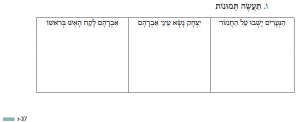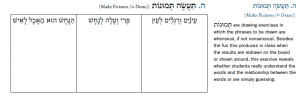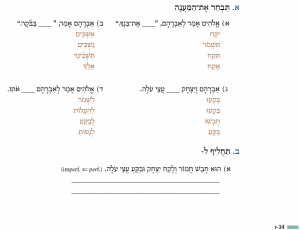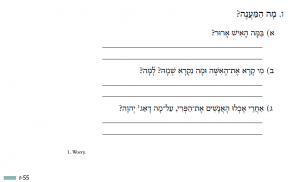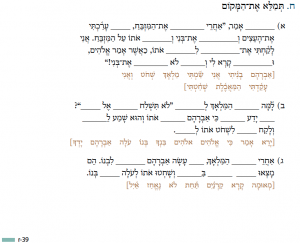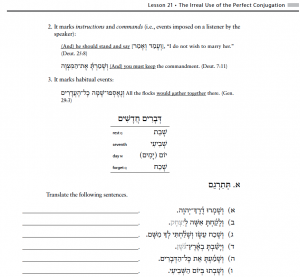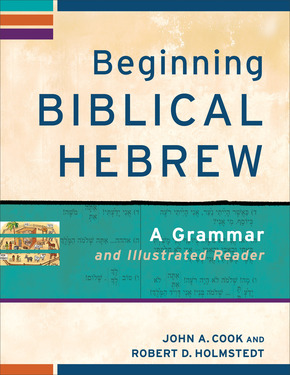This post addresses the third of three questions about the textbook one reader sent us recently. The first post is here; the second post is here.
Question:
The captions in the boxes in which to draw pictures confuse me. Just one example of several: On page r-37, the middle box reads, יצחק נשא עיני אברהם. Does this mean to say, “Isaac lifted the (where is the את here and often?) eyes of Abraham.” But this is not the biblical idiom. No one ever “lifts up” someone else’s eyes.
Answer:
On the presence and absence of את for complements: the pattern for the use of את is far from clear in BH. And since we do not try to mimic modern Hebrew in our examples, we often leave את out, just as the biblical writers do. For the latest (and best) work on the BH use of את, we refer you to the 2012 Hebrew Union College phd thesis by Peter Bekins. It shows how את behaves in somewhat expected patterns within the context of “differential direct object marking”.
On the nonsense phrase יצחק נשׂא עיני אברהם: the תמונות exercises are intended to request absurd pictures in order to test comprehension and add a laugh in class. They are often the most enjoyable exercises for my students, since they are indeed nonsense and bring some levity to the hard task of learning language. We make this explicit in the free instructor’s manual (IM) that Baker provides for instructors teaching with the textbook (the picture below shows the first time the תמונות exercise is used and our IM comment.
